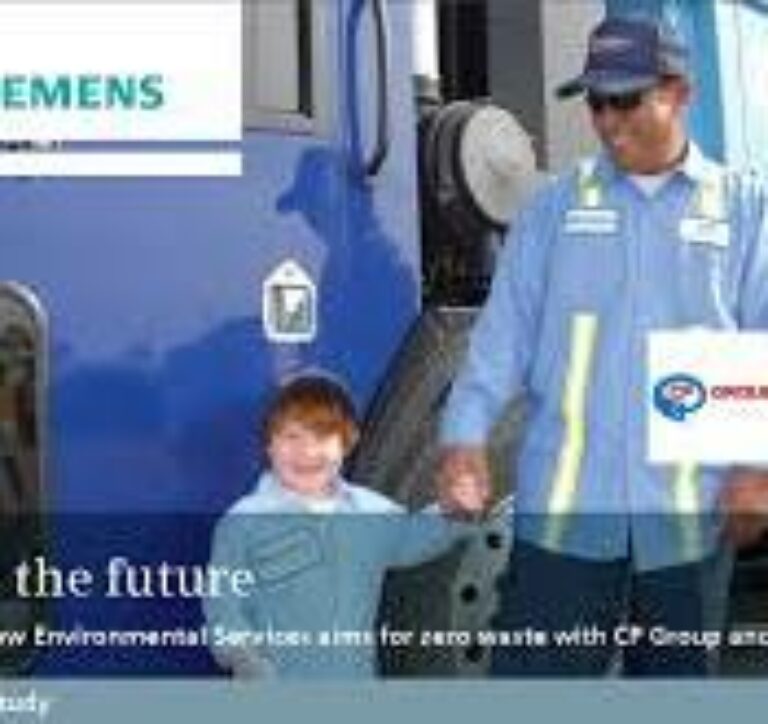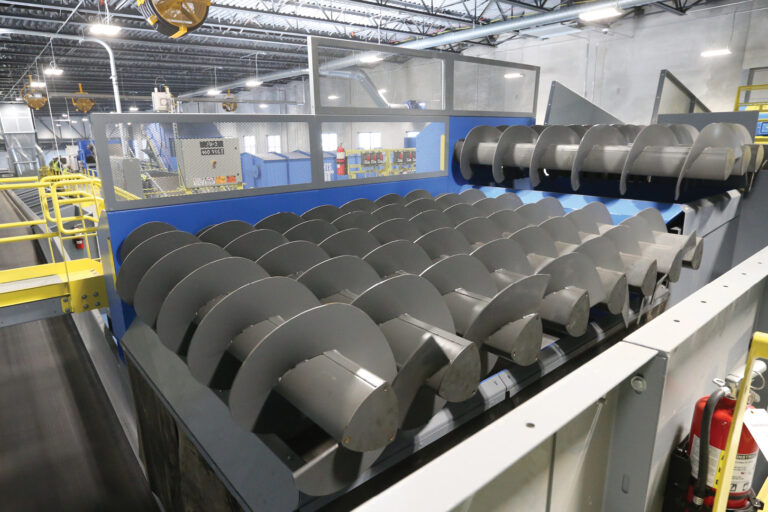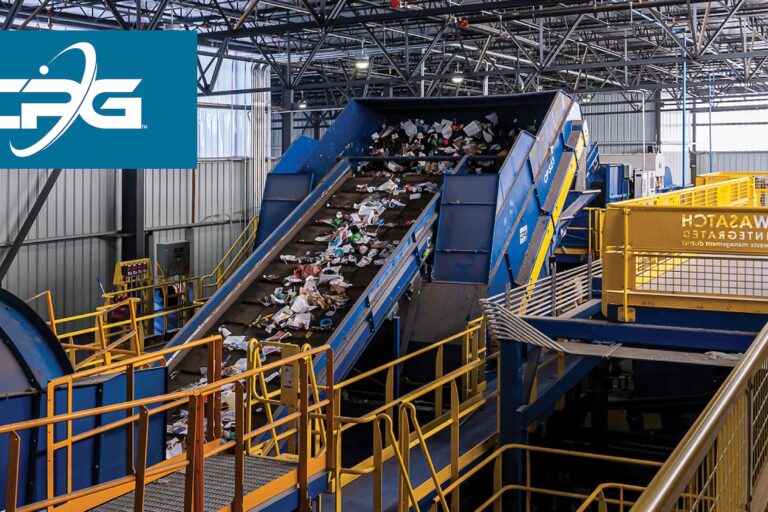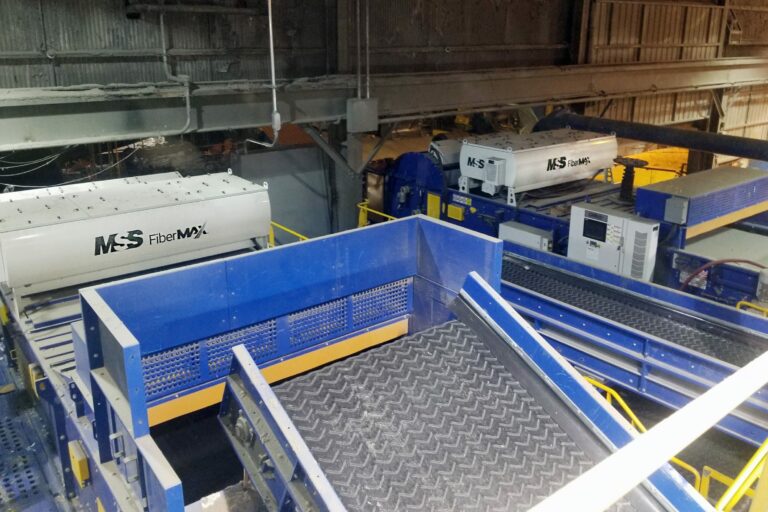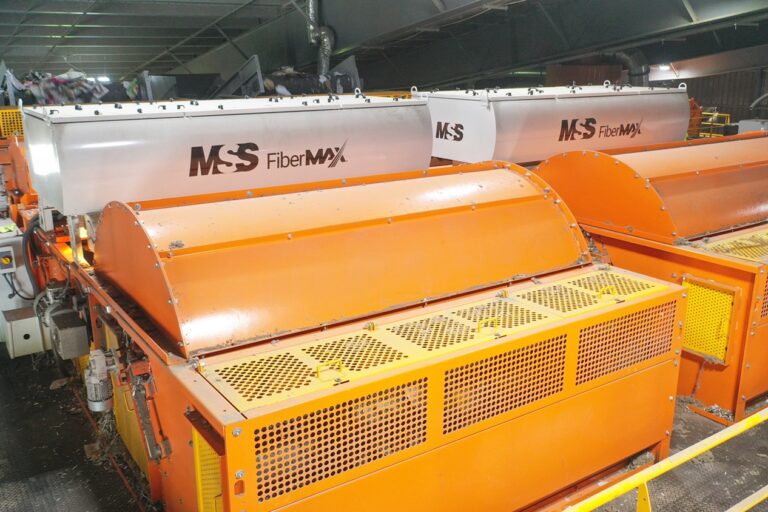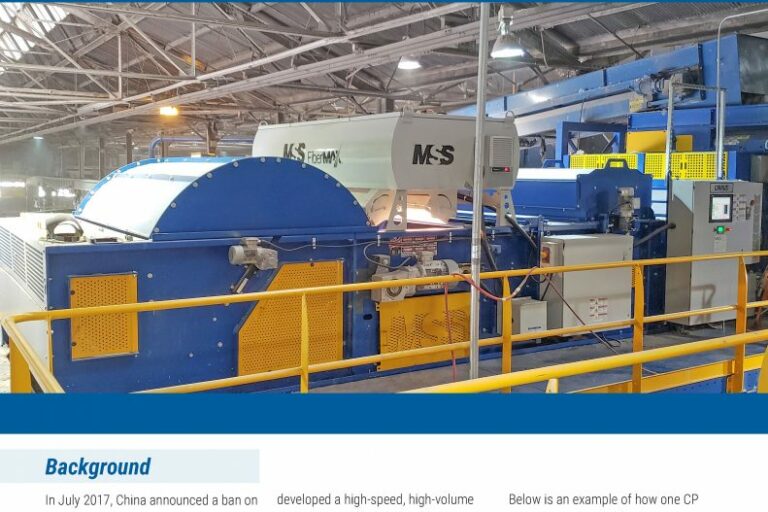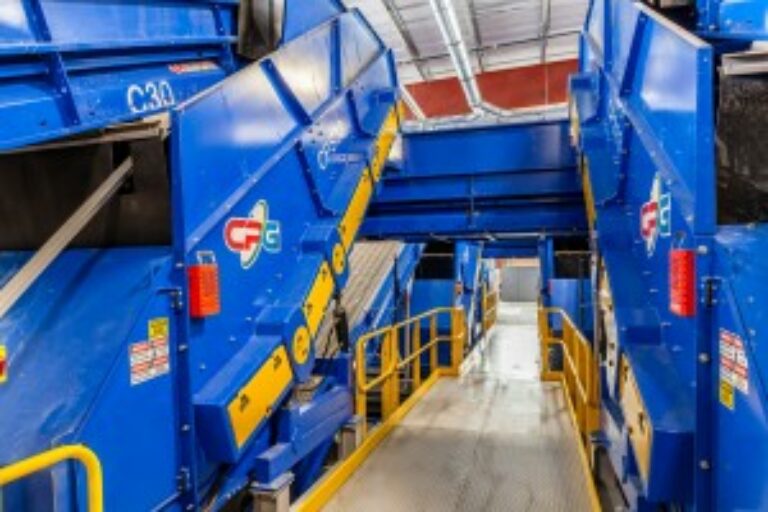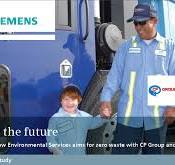
Chase Clark wants to be a recycler with Rainbow Environmental Services when he grows up. The three-year-old boy loves nothing more than watching the collection trucks roll out of Rainbow’s Huntington Beach, California Material Recovery Facility (MRF) early in the morning.
“Most of the drivers have gotten to know Chase, and they’ll honk their horns and wave on their way out for morning rounds,” said Rhonda Clark, Chase’s mom and a big fan of recycling. “He loves those trucks and thinks Rainbow is really cool.”
Chase isn’t the only one. Rainbow’s relentless and strategic push for a greener, smarter and safer recycling operation is helping to inspire an entire industry. “We’re an environmental sustainability company,” said Sue Gordon, Rainbow’s Vice President of Environmental and Public Affairs. “Rainbow is all about applying the materials we receive through our gates to a higher and better use.”
Even the trucks that Chase aspires to drive someday play a big role in Rainbow’s eco- friendly strategy. They run on compressed natural gas, as they crisscross Orange County picking up the trash and recyclables in Fountain Valley, Newport Beach, Westminster, Huntington Beach, Costa
Mesa and Irvine.
Rainbow’s recycling plant is equally advanced, with plans to move it even further along the cutting edge. The industry innovator wants to reduce downtime and energy consumption at the facility. It must also boost profits and expand into new markets. CP Manufacturing and Siemens are already enabling Rainbow to make significant progress in reaching its green objectives.
Massive state-of-the-art material separation systems built by CP Group are enabling Rainbow to more efficiently process 25 to 30 tons of residential and commercial waste an hour. The CP conveyors and screening equipment are controlled and monitored by intelligent and integrated Siemens automation and SCADA solutions. The technology has already greatly improved uptime, reduced energy usage and allowed Rainbow to reach out to its first new market.
But the recycler isn’t resting on its laurels. Rainbow is keenly focused on taking its operation to the next level. Breakthrough capabilities ranging from innovative screen and disc designs that capture more marketable materials to baler integration and real-time inventory management are on Rainbow’s roadmap.
“Waste has become an incredibly valuable resource across the globe, and Rainbow is tuned into market demands everywhere from North America to Asia,” said Bruce Shuman, Rainbow’s President and CEO. “CP is at the heart of our growth and automation strategy, with the scalable solutions, the expertise and partnerships to help us maximize our separation systems and optimize our entire business for the future.”
A Partnership in innovation
When Rainbow upgraded its Huntington Beach MRF about seven years ago, it chose CP’s rugged and advanced material sorting systems. CP designs and builds some of the most sophisticated material recovery facilities for leading waste processing companies around the world. The MRF manufacturer has acquired many of the best recycling solution providers to complement its own separation technology. The result is a true end-to-end offering that covers virtually every facet of the business.
“We’ve brought the leading recycling technologies together in one powerful partnership under the CP Group,” explained Bob Davis, CP Group CEO. CP owns cutting-edge baler maker IPS Balers, MSS optical sorters, rugged and revered Krause construction and demolition (C&D) sorters, and Advanced MRF, a coveted team of control system engineers and developers and a Siemens Solution Partner.
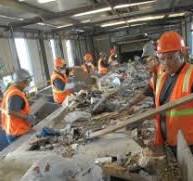
The Advanced MRF acquisition earlier this year is viewed across the industry as a real feather in CP’s cap. “Advanced MRF is standardizing all of our baler and sorter systems on the Siemens Simatic platform, a totally integrated automation (TIA) solution,” Davis noted. “That’s a real game changer for innovative MRF operators like Rainbow that want to get as much information and recovery from their plants as possible.”
Siemens’ powerful WinCC SCADA system together with the Siemens S7-300 PLC (programmable logic controller) is monitoring the hundreds of motors, drives and heavy duty conveyors carrying tons of recyclables through the Rainbow plant. “If a motor is running too hot or a conveyor belt is clogged, the intelligent PLC immediately sends a trouble alert pinpointing the culprit,” explained Richard Price, General Manager of Advanced MRF and a leading expert on the automation of recovery facilities.
Rainbow’s IT director Gisela Gamboa gets the instant warnings on her smart phone, iPad and laptop. She can also see the plant from anywhere, thanks to multiple web cam views and a SCADA interface delivered over Siemens’ WinCC. “A real-time glimpse into the system, complete with time-stamped operational reports, is enabling us to anticipate problems, provide preventative maintenance and training, and avoid costly downtime,” Gamboa said. “Without a system like this, all you know is you lost production time you’ll never get back,” she noted. “You don’t know why or when it happened or how to eliminate the cause.” This technology gives us a real edge that provides a trail of visibility and an operational standard that is a cut above the rest.”
“Downtime can cause major disruptions,” said Shuman. “Do you know what a garden hose can do to sorting machinery,” he mused, recalling some of the unexpected items finding their way onto Rainbow conveyors. “CP systems with Siemens monitoring and control capabilities enable us to see when we’ve sucked up a garden hose long before it can wreak havoc,” Shuman said.
MRF operators have gotten hosed for tens, even hundreds of thousands of dollars in downtime. Shuman says lengthy shutdowns have been virtually eliminated by CP and Siemens innovations.
A partnership in sustainability
With its lofty goal of zero waste, Rainbow is laser focused on running a smarter, more energy efficient plant capable of keeping more materials out of the landfill. About 93% of the waste Rainbow collects at the curb in neighborhoods across Orange County is recovered for reuse. Sorters on Rainbow’s mixed waste processing line rip into trash bags from non- recycling households to “mine” the glass bottles, aluminum cans and plastics. Non-traditional materials are emerging as hot commodities too. The heavy-duty Krause line at Rainbow is fully capable of sorting construction and demolition debris, such as concrete from steel and wood. Tree branches and scrap lumber hauled in by local landscapers and contractors are diced into mounds of wood chips and eventually burned and turned into electricity at co-generation plants.
Materials once dreaded and tough to process at MRFs, such as metal coat hangers and plastic grocery bags, are now in high demand among manufacturers in places like China and Latin America. Rainbow and CP saw the changing market and deployed new screen technologies ahead of the curve.
“Recyclables are constantly changing. There’s far less newspaper and far more plastic bags and electronics coming through plants today,” said CP’s Davis. “Our latest screen and disc equipment designs allow recyclers to effectively capture the new wave of materials,” noted Davis, who credits Advanced MRF and Siemens in part with CP’s leadership in materials separation.
“We’re able to focus on developing new and important mechanical product lines, such as electronics waste sorting and energy-from-waste production, because we know our control and automation platform is covered. That’s a given,” said Davis. “We aligned ourselves with Siemens years ago, and we’ve never looked back. Siemens is bringing new ideas to the marketplace,” he noted. “And now that at least half our business is driven by global sales, we have a true forward- thinking partner that supports us all over the world.”
Forward thinking led Rainbow to begin expanding its operation into key markets across the U.S., using Siemens’ WinCC. The same SCADA system that allows the recycler’s IT director and line operators to track Rainbow’s flagship plant in Huntington Beach, California, is enabling Rainbow to enter underserved markets like Pensacola, Florida. “We are among the best in the industry,” said Schuman. “Our experienced team can now watch over and manage our Florida operation from anywhere, using real-time data and live camera images pushed to a range of devices over WinCC,” he explained.
Rainbow’s Pensacola plant processes about 130 tons of waste per day from households across Escambia and Santa Rosa Counties in the Florida panhandle. The control platform will grow right along with the new plant. “Our Siemens SCADA system has opened doors to exciting new growth opportunities at Rainbow,” Shuman said. The Pensacola expansion is just the beginning of advancements to come.
“Rainbow is a dynamic operation on the verge of integrating its baler operation into its overall operator interface system (OIS), which monitors the primary plant using the Siemens SCADA platform,” explained Advanced MRF’s Price. “Rainbow will see real-time baler production data anytime, anywhere through CP’s OIS. That will be a major milestone across the industry,” Price added. “Every MRF operator wants to be able to track baler production real time, and CP can deliver the capability today.”
Down the line, Rainbow plans to add Siemens RFID (Radio Frequency Identification) technology to leap forward into cutting-edge inventory management. It’s the missing link in most recycling operations, where today bales are tallied manually on clipboards by plant workers. Once that loop is closed, Rainbow will know everything there is to know about each and every bale on the plant floor; how much it weighs, whether it’s sold and where it’s headed.
“Real-time inventory management changes everything,” said Craig Campbell, Rainbow’s Vice President of Materials Transfer. He’s known as Rainbow’s magician, a recyclable commodities expert who knows how to make tightly compacted bales of recovered materials disappear from Rainbow’s plant floor. “The more information we have about our inventory at any given moment, the more effective, proactive and profitable we will be in the marketplace,” Campbell noted.
“We’ve never run into a red light with Siemens, they’re real go- getters like us,” said Davis. “Our Siemens partnership has replaced the ‘We can’t do that’ with eye-opening aha moments and the confidence that comes with ‘We can do that,’” Davis noted with a smile. The development of seamless Profibus network-delivered solutions, such as the PROFIsafe emergency e-stop safety module, is an example of the out-of-the-box vision that can result from customer centricity. “Siemens is committed to helping CP, Advanced MRF and Rainbow create whatever it is their machines, businesses and dreams need to evolve to, and that’s exciting,” said Al Esparza, Siemens Industry Account Manager. “That’s exactly why we’re here.”

With the future in mind
The more Rainbow knows about the energy efficiency of its plant operation, the more control it has over its own environmental footprint and bottom line. “We have a companywide sustainability push to reduce our footprint,” said Shuman. “The knowledge and insight that CP and Siemens can pull from our plant in the form of operations and energy usage data is critical to our success going forward,” he added.
Not only can the Siemens equipment report on energy consumption at the material recovery facility, it can cut energy usage as well. “Intelligent motor control is a critical building block for a greener plant,” said Esparza. “Variable frequency drives (VFDs), advanced PLCs, sensors and WinCC SCADA can dramatically shrink an MRF’s dependence on the grid,” he detailed. Siemens regenerative SINAMICS G series drives actually put excess energy back into the power grid. Three- phase motors, which became mandatory in 2011, are cutting energy waste.
“The legacy motors driving our separation system are typically one of the plant’s biggest power hogs,” said Shuman, who went to CP for a greener solution. CP and Advanced MRF offered up the Siemens Simatic ET 200S Motor Starter. The modular device can transform a single-speed motor into an intelligent device that can communicate with the PLC running the show. “We have full intelligence across the nearly 300 motors running our operation. We can pull information from each device and cut energy usage by at least 10% per motor,”
Shuman noted. “That adds up to a smarter, greener plant with a more eco-friendly footprint.”
Rainbow’s shrinking footprint is leaving a positive impression
on the communities it serves. The company has partnered with more than 70 Orange County schools and offers a recycling program on its web site www.rainbowes.com, educating kids on the benefits of recycling. The students could probably learn a lesson or two from Chase Clark, who loves to recycle with Rainbow. “Recycling is a very big deal at our house, and Chase is our toughest enforcer,” laughed Rhonda Clark. “It’s important to think about our own footprints, what we’re using and keeping out of the landfill,” she said. “I appreciate what Rainbow does every day, because it really is for the future.”
For More Information:
www.rainbowes.com
usa.siemens.com/industry
